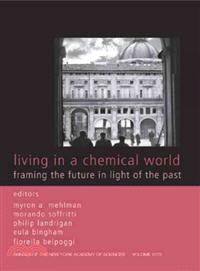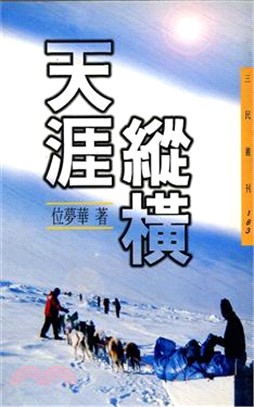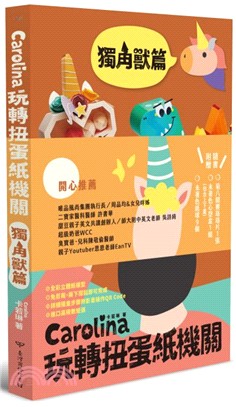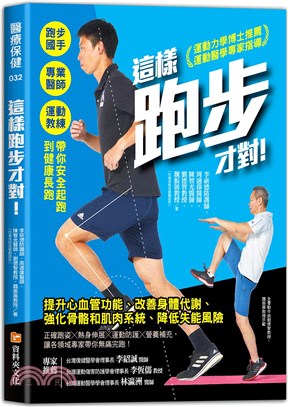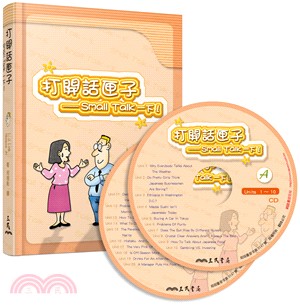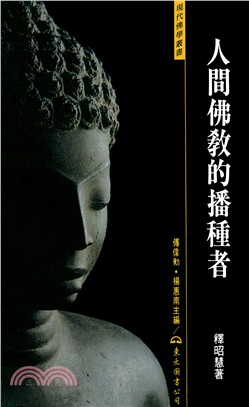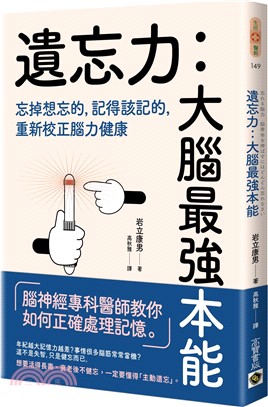LIVING IN A CHEMICAL WORLD:FRAMING THE FUTURE IN LIGHT OF THE PAST
商品資訊
商品簡介
Held by the Collegium Ramazzini, an international academy of scientists who are experts in the fields of occupational and environmental health, this conference will consider in particular the carcinogenic risks present in the general and occupational environment.
Many risks are still present in the workplace and the general environment in spite of our long awareness of them. This meeting will serve to update our knowledge of these risks in order to define the scientific bases for more stringent regulations and more effective prevention.
The results of studies on hazardous agents and situations brought about by recent technological innovations and new life styles will be presented. New strategies for prevention will be suggested for protection from those risks.
Data on the diffusion of carcinogenic hazards from the industrially developed to the developing nations will be evaluated.
Scientific tools now available for prevention will be reviewed, and, where necessary, the strategies for protection from risk will be determined.
Hazardous waste, the risks of nanoparticles, endocrine disrupters, prenatal environmental exposures and developmental outcomes, human exposure to environmental hazards in the World Trade Center aftermath, and the social and economic perspectives on environmental and occupational diseases will be discussed.
NOTE: Annals volumes are available for sale as individual books or as a journal. For information on institutional journal subscriptions, please visit www.blackwellpublishing.com/nyas.
ACADEMY MEMBERS: Please contact the New York Academy of Sciences directly to place your order (www.nyas.org). Members of the New York Academy of Science receive full-text access to the Annals online and discounts on print volumes. Please visit http://www.nyas.org/MemberCenter/Join.aspx for more information about becoming a member
目次
The Identification of Carcinogenic Agents and the Primary Prevention of Cancer: Lorenzo Tomatis.
Keynote Addresses:.
Identifying and Preventing Hazards in the Environment and at Work.
The Relationship Between Prenatal Environmental Exposures and Developmental Outcomes, Cancer Risk and Respiratory Health in a Prospective Cohort Study: Frederica Perera.
Tools and Strategies to Reduce Risk: Applying Science to Achieve Prevention.
Interpreting Cancer Trends: Elizabeth M. Ward, Michael J. Thun, Lindsay M. Hannan, Ahmedin Jemal.
Reducing and Managing Risk in High Hazard Sectors.
The Anatomy of the Exposures That Occurred Around the World Trade Center Site: 9-11 and Beyond: Paul J. Lioy.
I. Identifying and Preventing Hazards in the Environment and at Work:.
A. Benzene and Other Gasoline Constituents/Additives:.
1. The Health Watch Case-Control Study of Leukaemia and Benzene, the Story So Far: Deborah C. Glass, Christopher N. Gray, Damien J. Jolley, Carl Gibbons, Malcolm R. Sim.
2. Benzene Exposure and Multiple Myeloma: A Detailed Meta-Analysis of Benzene Cohort Studies: Peter F. Infante.
3. Dangerous and Cancer-Causing Properties of Products and Chemicals in the Oil Refining and Petrochemical Industries. Part XXX: Causal Relationship Between Chronic Myelogenous Leukemia and Benzene-Containing Solvents: Myron A. Mehlman.
4. Dangerous and Cancer-Causing Properties of Products and Chemicals in the Oil Refineries and Petrochemical Industries. Part XXXI: Causal Relationship Between Non-Hodgkin's Lymphoma and Exposure to Benzene and Benzene-Containing Solvents: Myron A. Mehlman.
5. Genetic Polymorphism of Toxicant-Metabolizing Enzymes and Prognosis of Chinese Workers With Chronic Benzene Poisoning: J-X Wan, Z-B Zhang, J-R Guan, D-Z Cao, R Ye, X-P Jin, Z-L Xia.
B. Use and Misuse of Mechanistic Data in Risk Assessment:.
6. Gene-Environment Interactions in Cancer: Do They Exist?: Kari Hemminki, Asta Försti, Justo Lorenzo Bermejo.
7. Manufactured Uncertainty: Protecting Public Health in the Age of Contested Science and Product Defense: David Michaels.
8. Misuse of Genetic Data in Environmental Epidemiology: Paolo Vineis.
9. Collision of Basic and Applied Approaches to Risk Assessment of Thyroid Toxicants: R. Thomas Zoeller.
C. Chlorinated Solvents:.
10. Science and Policy in Risk Assessments of Chlorinated Ethenes: Christina Rudén.
11. Potential Health Effects of Occupational Chlorinated Solvent Exposure: Avima M. Ruder.
D. Endocrine Disruptors:.
12. Endocrine Disruptors: Challenges for Environmental Research in the 21st Century: Mary S. Wolff.
13. Risk Assessment of Endocrine Disrupters: the Role of Toxicological Studies: Alberto Mantovani.
E. Air Pollution and Non-Fibrous Particles:.
14. Diesel Exhaust and Coal Mine Dust: Lung Cancer Risk in Occupational Settings: Barbara Hoffmann & Karl-Heinz Jöckel.
15. Lung Tumour Risk Estimates from Rat Studies With Not Specifically Toxic Granular Dusts: Markus Roller & Friedrich Pott.
F. Asbestos and Man-Made Mineral Fibers:.
16. Measurements of Asbestos Burden in Tissues: Ronald F. Dodson and Mark A. L. Atkinson.
17. Asbestos Ban in India: Challenges Ahead: T. K. Joshi, Uttpal B. Bhuva, Riyanka Katoch.
G. Radiation:.
18. Ionizing Radiation and Cardiovascular Disease: David G. Hoel.
19. Power-Frequency Electric and Magnetic Fields in the Light of Draper Et Al 2005: John Swanson, Tim Vincent, Mary Kroll, Gerald Draper.
H. Nanotechnology and Emerging Industries:.
20. Getting it Right the First Time: Developing Nanotechnology While Protecting Workers, Public Health and the Environment: John M. Balbus, Karen Florini, Richard A. Denison, Scott A. Walsh.
II. Reducing and Managing Risk in High Hazard Sectors:.
A. Agriculture:.
21. Pesticides and Adult Respiratory Outcomes in the Agricultural Health Study: Jane A. Hoppin, David M. Umbach, Stephanie J. London, Charles F. Lynch, Michael C.R. Alavanja, Dale P. Sandler.
22. The Assessment of Occupational Exposure to Diazinon in Nicaraguan Plantation Workers Using Saliva Biomonitoring: Chensheng Lu, Teresa Rodríguez, Aura Funez, Rene S. Irish, Richard A. Fenske.
23. Cancer and Pesticides: an Overview and Some Results of the Italian Multicenter Case-Control Study on Hematolymphopoietic Malignancies: Lucia Migli, Adele Seniori Costantinia, Angela Veraldia, Alessandra Benvenutia, Will, Paolo Vineis.
24. Geographic Model and Biomarker Derived Measures of Pesticide Exposure and Parkinson Disease: Beate Ritz & Sadie Costello.
B. Construction:.
25. The Construction Industry: Knut Ringen and Anders Englund.
26. Frequency and Quality of Radiation Monitoring of Construction Workers at Two Gaseous Diffusion Plants: Eula Bingham, Knut Ringen, John Dement, Wilfrid Cameron, William McGowan, Laura Welch, Patricia Quinn.
27. Evaluation of Exposure to Pahs in Asphalt Workers by Environmental and Biological Monitoring: Laura Campo, Marina Buratti, Silvia Fustinoni, Piero E. Cirla, Irene Martinotti, Omar Longhi, Domenico Cavallo, Vito Foa.
28. Carcinogens in the Construction Industry: Bengt Järvholm.
29. Epoxy Resins in the Construction Industry: Ton Spee, Cor Van Duivenbooden, Jeroen Terwoert.
C. Hazardous Waste:.
30. Health Effects of Hazardous Waste: Steve M. Dearwent, Moiz Mumtaz, Gail Godfrey, Thomas Sinks, Henry Falk.
31. Cancer Mortality in an Area of Campania (Italy) Characterized by Multiple Toxic Dumping Sites: P. Comba, F. Bianchi, L. Fazzo, L. Martina, M. Menegozzo, F. Minichilli, F. Mitis, L. Musmeci, R. Pizzuti, M. Santoro, S. Trinca, M. Martuzzi and "Health Impact of Waste Management in Campania" Working Group".
32. Hazardous Waste: Recognition of the Problem and Response: Henrik Harjula.
33. New Directions in Managing Hazardous Wastes from an Industry Perspective: Lynn D. Johnson.
34. Developments in Management and Technology of Waste Reduction and Disposal: Philip Rushbrook.
D. Evaluating Energy Technology Risks:.
35. Systematic Approach to Evaluating Trade-Offs Among Fuel Options: The Lessons of MTBE: J. Michael Davis & Valerie M. Thomas.
36. Environmental Impacts and Costs of Energy: Ari Rabl & Joseph V. Spadaro.
E. Weapon Destruction:.
37. Worldwide Governmental Efforts to Locate and Destroy Chemical Weapons and Weapons Materials: Minimizing Risk in Transport and Destruction: Ralf Trapp.
38. Options for the Destruction of Chemical Weapons and Management of the Associated Risks: Ron G Manley.
39. Health and Environmental Threats Associated With the Destruction of Chemical Weapons: Jirí Matoušek.
III. Tools and Strategies to Reduce Risk: Applying Science to Achieve Prevention:.
A. Long-Term Carcinogenesis Bioassays and Other Testing Strategies:.
40. Results of Long Term Carcinogenicity Bioassay on Sprague-Dawley Rats Exposed to Aspartame Administered in Feed: Fiorella Belpoggi, Morando Soffritti, Michela Padovani, David Degli Esposti, Michelinai Lauriola, Franco Minardi.
41. Results of a Long Term Carcinogenicity Bioassay on Sprague-Dawley Rats Exposed to Sodium Arsenite Administered in Drinking Water: Morando Soffritti, Fiorella Belpoggi, David Degli Esposti & Luca Lambertini.
42. Use of Long Term Carcinogenicity Bioassays in the IARC Monographs: Vincent James Cogliano.
IV. Provision of Health Care:.
A. Health Care:.
43. Chemical Hazards in Healthcare: High Hazard, High Risk But Low Protection: Melissa A. McDiarmid.
44. National and International Response to Occupational Hazards in the Healthcare Sector: Brigitte Froneberg.
45. Hazardous Anticancer Drugs in Health Care: Environmental Exposure Assessment: Thomas H. Connor.
46. Beyond Managing Health Care Risks: The Health Promoting Hospital Initiative in Mexico: Carlos Santos –Burgoa.
47. Handling Anticancer Drugs - from Hazard Identification to Risk Management?: Marja Sorsa, Mervi Hämeilä, Eija Järviluoma.
48. Chemical Safety and Health Conditions Among Hungarian Hospital Nurses: Anna Tompa, Mátyás Jakab, Anna Biró, Balázs Magyar, Zoltán Fodor, Tibor Klupp, Jeno Major.
49. Residual Hazard Assessment Related to Handling of Antineoplastic Drugs (Ads): Safety System Evolution and Quality Assurance of Analytical Measurement: Roberta Turci & Claudio Minoia.
B. Child Health:.
50. Framing the Future in Light of the Past: Living in a Chemical World: Philip Landrigan, Jenny Pronczuck De Garbino, Brooke Newman.
51. Children’s Environment and Health in Latin America: The Ecuadorian Case: Raul A. Harari & Homero F. Harari.
52. Environmental Impacts on Children's Health in Southeast Asia: Genotoxic Compounds in Urban Air: Mathuros Ruchirawat, Panida Navasumrit, Daam Settachan, Herman Autrup.
53. New Developments in Children's Environmental Health in Europe: Giorgio Tamburlini.
C. Genetic Environment and Effect Modulators:.
54. Toxicogenomics - A New Systems Toxicology Approach to Understanding of Gene-Environment Interactions: Kenneth Olden.
55. Toxicoproteomics in Liver Injury and Inflammation: Alex Merrick.
56. Gene Expression Alterations in Immune System Pathways Following Exposure to Immunosuppressive Chemicals: Rachel M. Patterson & Dori R. Germolec.
57. Transcriptional Profiling and Functional Genomics Reveal a Role for Ahr Transcription Factor in Nephrogenesis: Kenneth S. Ramos.
V. Open Communications:.
58. Results of Long-Term Carcinogenicity Bioassays on Coca Cola Administered to Sprague-Dawley Rats: Fiorella Belpoggi, Morando Soffritti, Eva Tibaldi, Laura Falcioni, Luciano Bua, Francesca Trabucco.
59. Occupational Kidney Cancer: Exposure to Industrial Solvents: Nachman Brautbar, Michael P. Wu, Elion Gabel, Lee Regev.
60. Occupation and Breast Cancer: A Canadian Case-Control Study: James T. Brophy, Margaret M. Keith, Kevin M. Gorey, Isaac Luginaah, Ethan Laukkanen, Deborah Hellyer, Abraham Reinhartz, Andrew Watterson, Hakam Abu-Zahra, Eleanor Maticka-Tyndale, Kenneth Schneider, Matthias Beck, Michael Gilbertson.
61. Adverse Health Effects of Fluoro-Edenitic Fibres: Epidemiologic Evidence and Public Health Priorities: Bruno Caterina, Comba Pietro, Zona Amerigo.
62. Glycol Ethers (GE), an Ubiquitous Family of Toxic Chemicals. A Plea for Reach Regulation: André Cicolella.
63. Controlling Exposure to Chemicals: A Simple Guide: Alastair Hay.
64. Progress of Epidemiological and Molecular Epidemiological Study on Benzene in China: Guilan Li and Songnian Yin.
65. Carcinogen Exposure and Epigenetic Silencing in Bladder Cancer: Carmen J. Marsit, Margaret R. Karagas, Alan Schned, Karl T. Kelsey.
66. Dangerous and Cancer-Causing Properties of Products and Chemicals in the Oil Refining and Petrochemical Industries. Part XXXII: Causal Relationship from Exposure to Chemicals in Oil Refining and Chemical Industries and Malignant Melanoma: Myron A. Mehlman.
67. A Regional Approach to Assess the Impact of Living in a Chemical World: Christopher T. De Rosa, Heraline E. Hicks, Annette Ashizawa, Hana Pohl, Moiz Mumtaz.
68. Low-Dose Risk, Hormesis, Analogical and Logical Thinking: G.A. Zapponia & I. Marcello.
VI. Roundtable on Social and Economic Impact of Occupational and Environmental Diseases. Tools and Strategies to Reduce Risk: Applying Science to Achieve Prevention:.
69. Occupational Injury and Illness Meet the Labor Market: Lessons from Labor Economics About Lost Earnings: Leslie I. Boden.
70. The Economic Costs of Health Service Treatments for Asbestos-Related Mesothelioma Deaths: Andrew Watterson, Tommy Gorman, Cari Malcolm, Mavis Robinson, Matthias Beck.
71. Valuing the Adult Health Effects of Air Pollution in Chinese Cities: Robert W. Mead and Victor Brajer.
72. Chinese Workers and Labor Conditions from State Industry to Globalized Factories: How to Stop the Race to the Bottom?: Marina Thorberg.
73. Applying Cost Analyses to Drive Policy That Protects Children: Mercury as a Case Study: Leonardo Trasande, Clyde Schechter, Karla A. Haynes and Philip J. Landrigan
主題書展
更多書展本週66折
您曾經瀏覽過的商品
購物須知
外文書商品之書封,為出版社提供之樣本。實際出貨商品,以出版社所提供之現有版本為主。部份書籍,因出版社供應狀況特殊,匯率將依實際狀況做調整。
無庫存之商品,在您完成訂單程序之後,將以空運的方式為你下單調貨。為了縮短等待的時間,建議您將外文書與其他商品分開下單,以獲得最快的取貨速度,平均調貨時間為1~2個月。
為了保護您的權益,「三民網路書店」提供會員七日商品鑑賞期(收到商品為起始日)。
若要辦理退貨,請在商品鑑賞期內寄回,且商品必須是全新狀態與完整包裝(商品、附件、發票、隨貨贈品等)否則恕不接受退貨。



